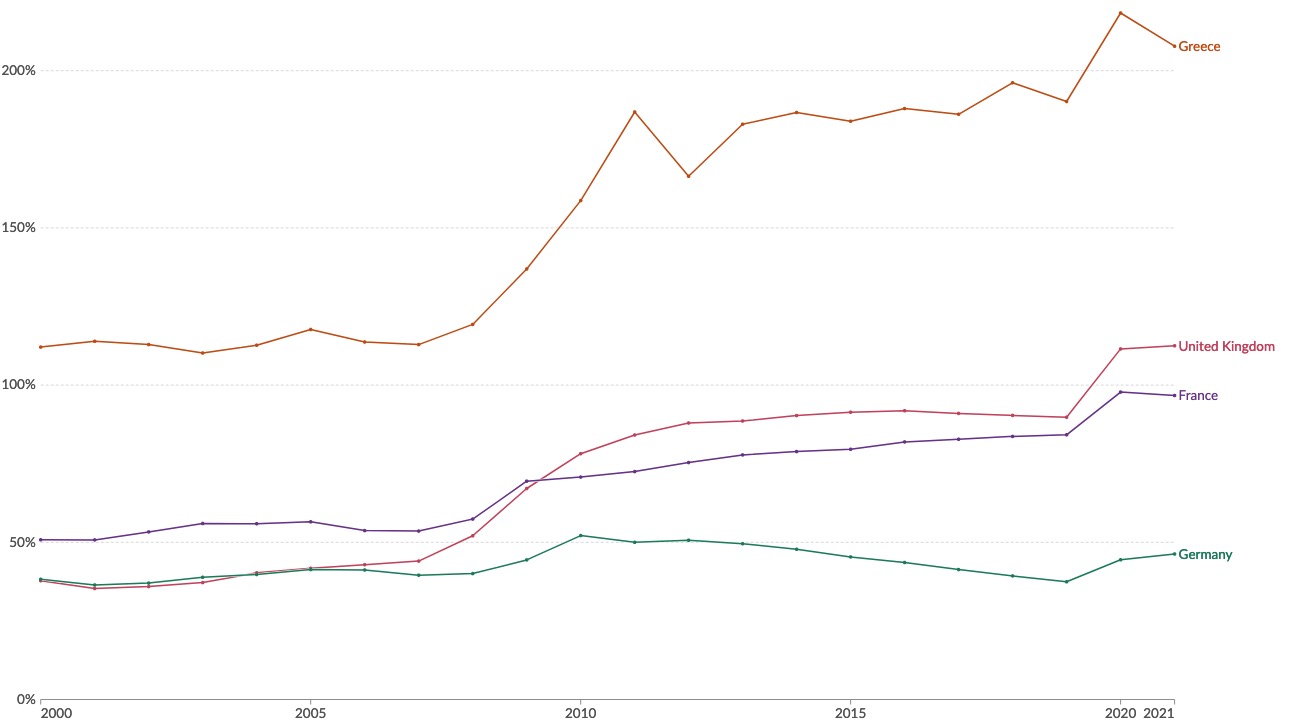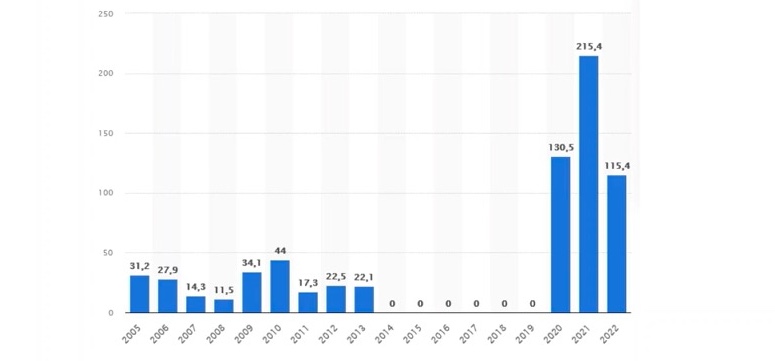24.01.2024 Public Debt#
Governemtn Debt: amount gov. borrowed on financial markets
government deficits / surplus: yearly increase / decrease
Types of gov. debt:
Explicit: official debt given out by the financial ministry
implicit: explicit + promised payouts in the future (e.g pensions etc.)
Calculation#
Present Discounted Value:
but:
very hard to calculate
(heroic) assumptions about r and F
=> focus on debt
The Numbers#
Development of Debt

Net Borrowing on Federal Level

Debt Rules#
Stability and Growth Pact#
on EU Level
deficit =< 3%
Debt =< 60%
no systematic argument about numbers, just chosen randomly!
never really enforced, because Germany was first country to breach them
in SGP, differentation between
strucutral deficits: permament debt
cyclical deficits: due to changes in business cycle
also esacpe clauses due to disasters / external factors
Debt Brake#
on German level = balanced budget amendment
strucutral deficit =< 0.35%
cyclical deficit = depends on business cycle
exceptions allowed in emergeny (covid, Ukraine, …)
Ricardian Equivalence#
finance via taxes or credit = equivalent
consumers = forward looking
anticipate tax increases in future if debt increase today
higher savings today
also intergenerational
= bullshit theory
Effects of Debt#
Short Run: Stabilization
Automatic stabilization: automaitc policies e.g unemployment insurance
Discretionary stabilisation: policy actions taken in response (e.g Gaspreisbremse)
= good for the economy
Long Run: Negative?
limited private capital investment
less economic growth due to less private investment
Reality:
depends on capital markets
and what the debt is used for…
=> evidence is inconclusive